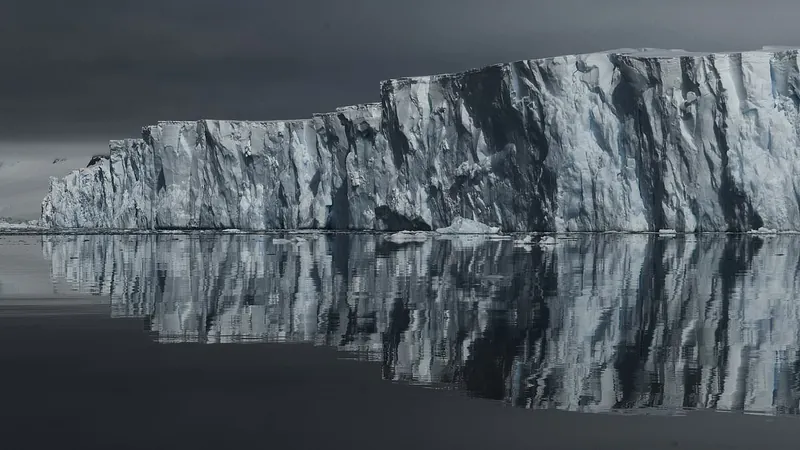
The Dire Threat of the 'Doomsday Glacier': Radical Solutions Proposed to Avert Catastrophic Flooding
2024-11-07
Author: Kai
Introduction
Experts are sounding the alarm as the Thwaites Glacier, ominously dubbed the 'Doomsday Glacier,' faces a relentless and accelerated melt due to climate change. Should this glacier collapse entirely, it could trigger a staggering rise in global sea levels of up to 10 feet, leading to catastrophic flooding of coastal cities such as New York, Miami, and Charleston.
Proposed Geoengineering Strategies
To combat this impending crisis, scientists are proposing bold geoengineering strategies aimed at halting the glacier's melt. Among these radical interventions is the installation of a massive underwater barrier—a towering curtain designed to block warm ocean currents from infiltrating beneath the glacier. Glaciologist John Moore, one of the researchers advocating for this project, envisions a 62-mile curtain anchored to the seabed of the Amundsen Sea. Building this barrier could cost upwards of $50 billion and presents significant engineering challenges.
Another innovative solution under consideration involves artificially thickening the glacier by pumping seawater onto its surface, where the cold air would freeze it in place. While this method shows potential promise, experts caution that the salinity of seawater may compromise the glacier's structural integrity, necessitating critical research before implementation.
The Urgency of Action
Nonetheless, proponents argue that swift action is vital. Douglas MacAyeal, a geophysical sciences professor at the University of Chicago, highlights the urgency of funding these experimental projects now to avoid dire, hasty decisions in the future.
Current Status of the Thwaites Glacier
The Thwaites Glacier is currently losing about 50 billion tons of ice annually, significantly contributing to global sea level rise. Its rapid melting is a direct result of warm tidal currents, which have been shown to undermine the glacier’s stability. In a recent study published in the *Proceedings of the National Academy of Sciences*, researchers utilized high-resolution satellite imagery to trace these perilous currents, enhancing our understanding of the multipart system at play.
Emerging Proposals
In light of these findings, additional proposals are emerging. One would involve cooling the underlying bedrock over which the glacier slides to reduce frictional melting. Princeton glaciologist Michael Wolovick suggests creating tunnels in the bedrock to flush cold water through, a technique that, while costly and ecologically delicate, could provide relief from glacial melt.
Controversies in Geoengineering
However, the implementation of geoengineering solutions isn't without controversy. Critics warn that these methods may distract from the more essential task of reducing carbon emissions, with climate economist Gernot Wagner declaring geoengineering a mere "painkiller," not a cure for climate change. Indeed, while innovative, these measures could lead to unforeseen ecological repercussions and may be less effective than hoped.
Conclusion
The precarious situation of the Thwaites Glacier underscores a dire truth: if it and the larger West Antarctic Ice Sheet (WAIS) were to collapse, we could witness unprecedented levels of sea rise that threaten the livelihoods of millions. This potential disaster is viewed by climate scientists as a critical tipping point, where irreversible changes in our climate system could cascade into a much larger global crisis.
As the clock ticks, researchers and policymakers must weigh the risks and rewards of these radical geoengineering proposals, as solutions to avert flooding in our major cities may very well depend on them. Climate change is knocking at our door—will we answer?




 Brasil (PT)
Brasil (PT)
 Canada (EN)
Canada (EN)
 Chile (ES)
Chile (ES)
 España (ES)
España (ES)
 France (FR)
France (FR)
 Hong Kong (EN)
Hong Kong (EN)
 Italia (IT)
Italia (IT)
 日本 (JA)
日本 (JA)
 Magyarország (HU)
Magyarország (HU)
 Norge (NO)
Norge (NO)
 Polska (PL)
Polska (PL)
 Schweiz (DE)
Schweiz (DE)
 Singapore (EN)
Singapore (EN)
 Sverige (SV)
Sverige (SV)
 Suomi (FI)
Suomi (FI)
 Türkiye (TR)
Türkiye (TR)